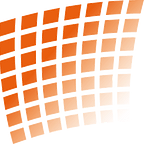Evaluation of the High-Tech Gründerfonds
The High-Tech Gründerfonds (HTGF) is investing through its funds HTGF I (since 2005) and HTGF II (since 2011) in young technology-based companies in order to stimulate the German seed financing market and to improve access to seed finance for technology based companies. Both funds are public–private partnerships. The Federal Ministry of Economics and Technology and the KfW Banking Group (owned by the federal government) provided almost 90% or €500m of the funds total capital volume (in HTGF I €240m of €272m an in HTGF II €260m of €304m).
Although this is only a short analysis I am going to figure out which are the financial figures you can compare with the Standard Performance Measurement principles of the Venture industry.
In the years 2005 to 2015 HTGF I portfolio companies completed 701 rounds of follow up financing. Private investors participated in 546 investment rounds (78%). The HTGF provided € 96m for follow up financing while other investors contributed €981m. The share of private sector investors was €766m, with €459m coming from private venture capital company funds.
As of 31.12.2015 the HTGF I (vintage 2005) made total investments of €243.2m and has so far generated returns to its investors amounting to €67.9m. An internal assessment of the economic potential of the portfolio companies in the first fund estimated the lower range of the exit value with € 200m. The reported Total value to paid in (TVPI) of the fund was 78% by December 31, 2015. The published shareholders equity was €74.6m (source: annual reports 2010 -2016 published at www.unternehmensregister.de).
As of 31.12.2016 the HTGF II (vintage 2011) made capital calls of €127.0m (42% of the commited capital). The reported TVPI (Valuation Guidelines von Invest Europe) was €103.3m. Distributions accounted for €3.6m (source).
*Cambridge Associates LLC US Venture Capital Index®
* Pooled return of 65 funds (2005) and 45 funds (2011), upper Quartile, lower Quartile
Despite these sobering results of HTGF I and HTGF II they seem to take responsibility in financing university spin-offs. This should be a strong motivation for further Start-up founders.
Worldwide activities of big corporations
To get a better idea where big US and International Corporations (Corporate Venture Capital - CVC) are investing I suggest to read the last report of cbinsights. The tendency to “outsourced R&D” might speed up in the future.
From 2012–2016, the top five US tech companies invested in 420 private companies, led by Google (Alphabet), which backed 333 startups through its various venture arms. In second, Microsoft invested in 39 startups over the time period. It nearly doubled the size of its portfolio in 2016. Amazon launched a new fund in 2015, the Alexa Fund, to invest up to $100M in companies focused on voice control technology. The Alexa Fund backed 18 startups since launch. IBM’s investment activity has been low, with just 3 investments in 2014, 2 in 2015 and 5 in 2016. Apple, which has made dozens of acquisitions since 2012, made just one disclosed equity investment.
The hottest sector is Artificial Intelligence (AI) for healthcare, cybersecurity and enterprise. Startups from 9 different countries — including France, Israel, Spain, Canada, Taiwan, Japan, and United Kingdom — climbed up to AI 100 this year. The majority of the companies, 76%, came from the United States. China’s AI startup scene is buzzing with activity. Five of the 8 AI companies from China are unicorns, 4 of them reaching $1B+ valuations just this year. In 2017 China has overtaken the US in the funding of AI startups.
The Top 100 AI Startups received $11.7B in funding, allocated in 367 deals.
Around 42% of the AI companies acquired since 2013 have had VC backing.
Summary
If you look at the numbers above European CVC’s are lagging the trend. You might not be surprised when Europe in general and Germany in particular will face quite a strong headwind in economical competition in the near future.
According to all these insights I am surprised that many well-known German companies have been investing in HTGFs. From investors’ perspective I don’t think that HTGF’s are good investments. Why? The answer is quite easy. The results of the CA index (an aggregated view) seen in the long term are much better.
MK Venture Capital (@MKVentureCap) provides an investing solution which combines both: a well diversified Venture Capital portfolio with access to new disruptive technologies and an appropriate return on the amount invested. For that reason your are invited to join us.
Investors in HTGF II with an commitment of €2.5m (or 0,82% of the total funds volume) are BASF SE, Robert Bosch GmbH, Daimler AG, Deutsche telekom Venture Fund GmbH, Altana Chemie GmbH, CEWE Stiftung &Co KGaA, Tengelmann Ventures GmbH, Carl Zeiss AG, B. Braun Melsungen AG, Qiagen Deutschland Holding GmbH, RWE Innogy GmbH, Deutsche Post DHL Reserach & Innovation GmbH, Evonik Industries AG, SAP AG, Lanxess Deutschland GmbH, media & more venture Beteiligungs GmbH & Co. KG, Metro Innovations Holding GmbH, Bayer Pharma AG
Investors in HTGF III are: Fraunhofer-Gesellschaft e.V., ALTANA, BASF, B.Braun, Robert Bosch, BÜFA, CEWE, Deutsche Post DHL, Drillisch AG, EVONIK, Haniel, Hettich, Knauf, Körber, LANXESS, media + more venture Beteiligungs GmbH & Co. KG, PHOENIX CONTACT, Postbank, QIAGEN, SAP, Schufa, Schwarz Gruppe, STIHL, Thüga, Vector Informatik, WACKER CHEMIE
